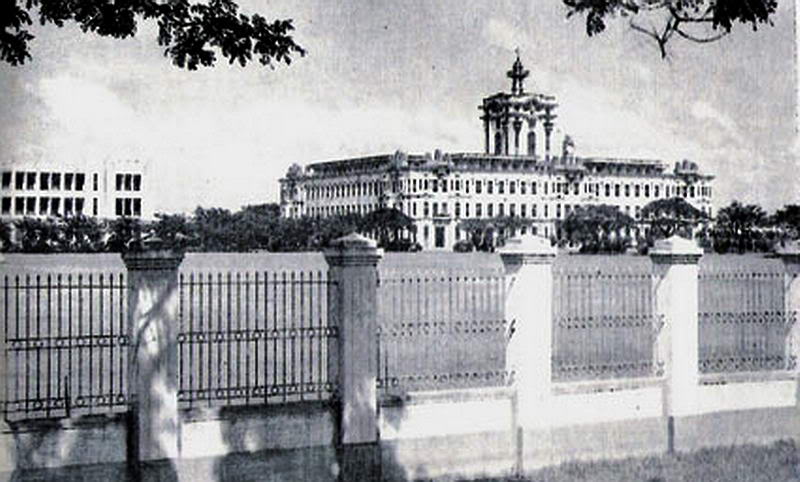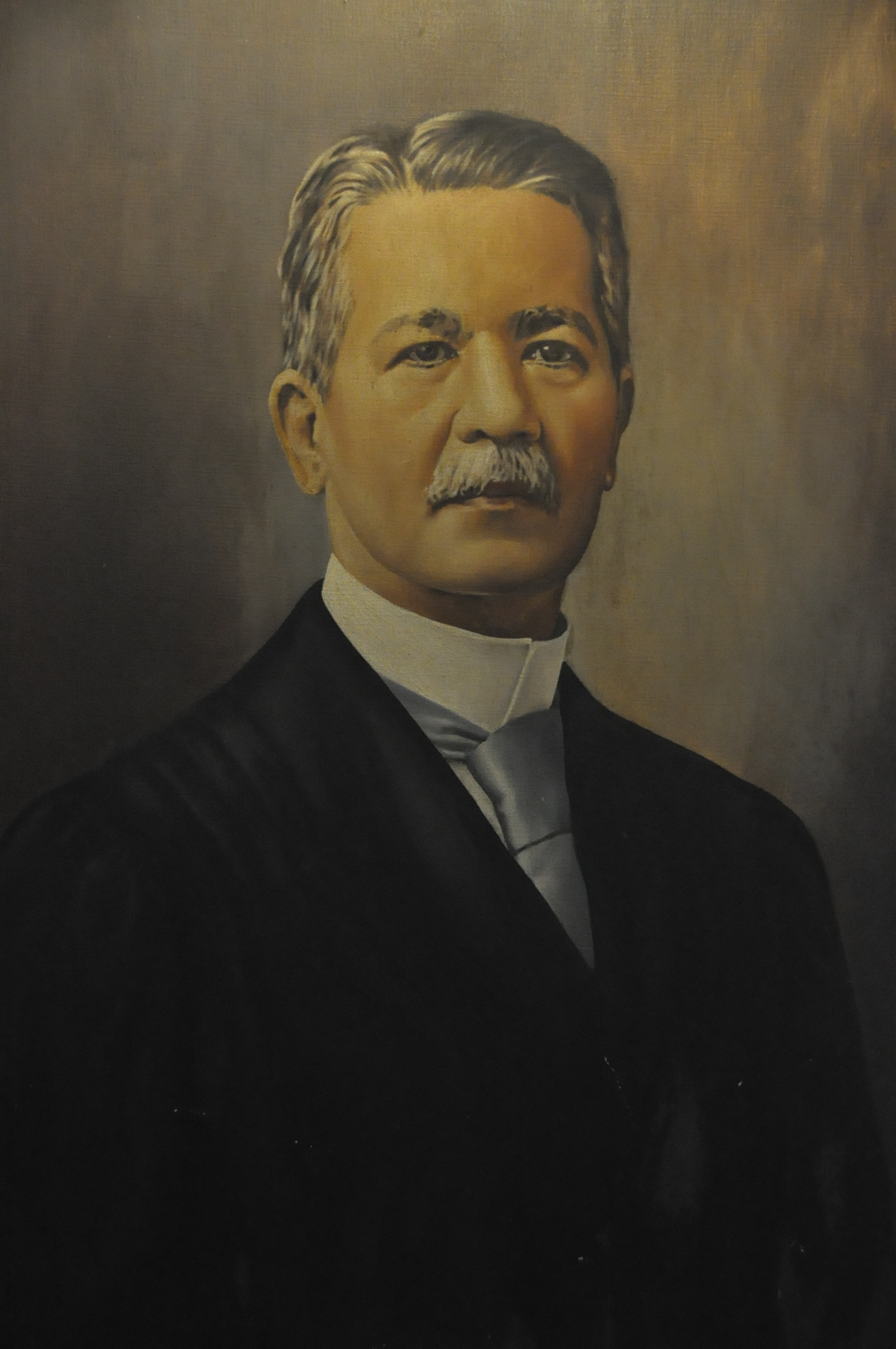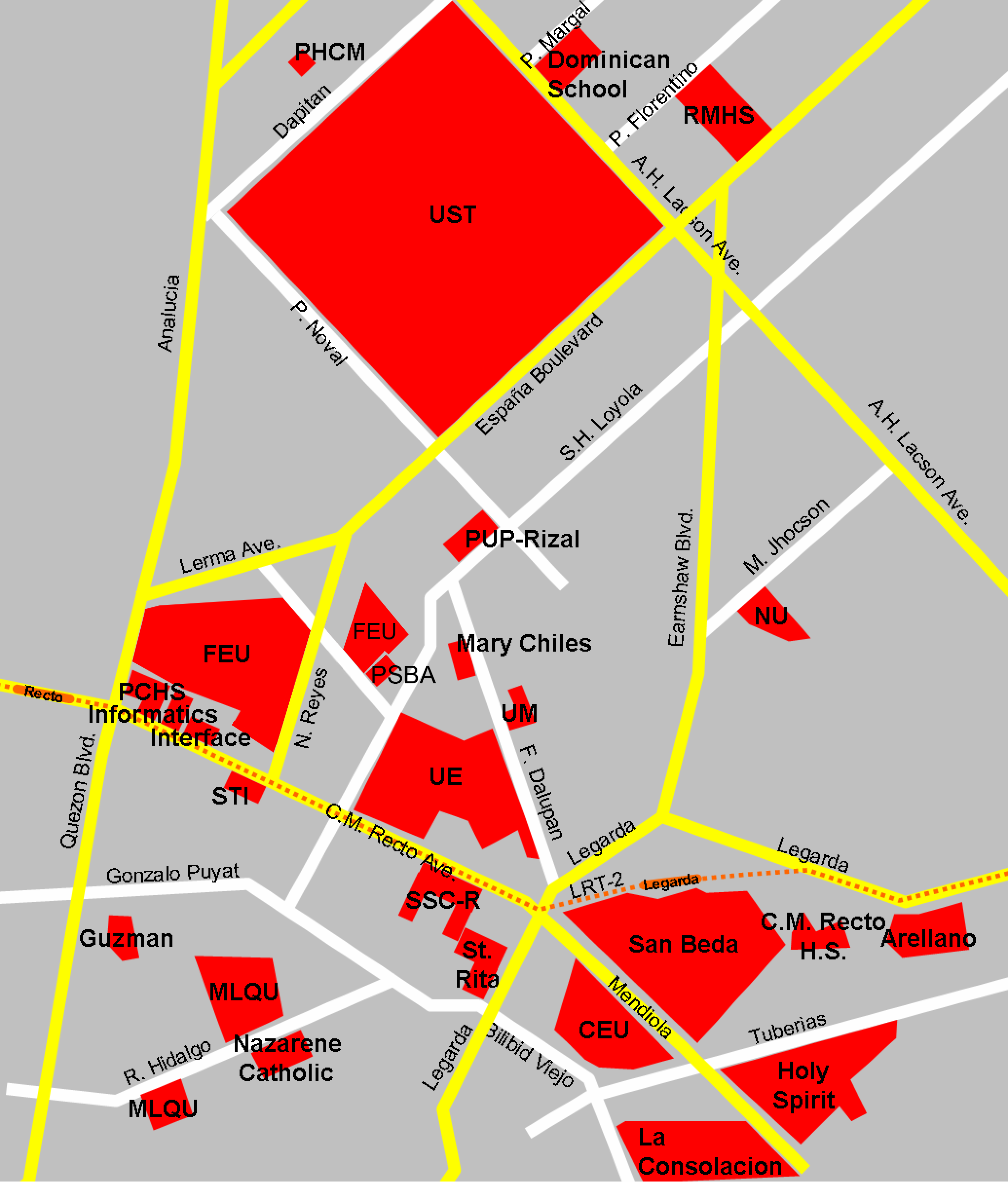|
Legarda Station
Legarda station is an elevated Manila Light Rail Transit (LRT) station situated on Line 2. The station is located in Sampaloc in Manila and is named after Legarda Street, where the station sits above it. The street in turn is named after Benito Legarda, a Filipino legislator. The station is the second station for trains headed to Antipolo and the twelfth station for trains headed to Recto. Nearby landmarks The station is popular with students who study in nearby universities such as University of the East and San Sebastian College along Recto Avenue; as well as San Beda University, Centro Escolar University, Victorino Mapa High School, La Consolacion College, and College of the Holy Spirit, all situated within the University Belt along the famed Mendiola Street; the Samson College of Science and Technology along Legarda Street; and also the Arellano University and National Teachers College. Mendiola Street also leads to Malacañang Palace in San Miguel district. It is also a ... [...More Info...] [...Related Items...] OR: [Wikipedia] [Google] [Baidu] |
Legarda Street
Legarda Street is a short street located in Sampaloc district in Manila, Philippines. It crosses through the eastern section of the University Belt area in a generally east–west orientation between the Nagtahan Interchange and the intersection with Nepomuceno Street in Quiapo. It is served by Legarda station of LRT Line 2. The street was named after Filipino legislator and resident commissioner to the United States, Benito Legarda y Tuason. Historically, its section in Sampaloc was formerly called ''Calle Alix'' (after a Real Audiencia of Manila magistrate of the 1860s, José María Alix y Bonache), while its section in Quiapo was formerly called ''Plaza Santa Ana'' and ''Calle Concordia'', respectively. Route Legarda Street commences at the Nagtahan Interchange as a westward continuation of Magsaysay Boulevard from Santa Mesa. It heads due west, traversing the southern edge of Sampaloc and skirting the northern boundary of San Miguel. After crossing Figueras Street, ... [...More Info...] [...Related Items...] OR: [Wikipedia] [Google] [Baidu] |
San Beda University
es, Universidad de San Beda , image = San Beda University seal.svg , image_size = 150px , caption = University Seal , latin_name = Universitas Sancti Bedæ , former_names = , motto = ''Fides, Scientia, Virtus'' () , mottoeng = ''Faith, Knowledge, Virtue'' , type = Private university, Private Roman Catholic research non-profit coeducational basic and higher education institution , established = , founder = Fr. Juan Sabater, OSB , closed = , religious_affiliation = Roman Catholic Church, Roman Catholic (Benedictine) , academic_affiliations = Mendiola Consortium, Mendiola Schools Consortium ALNC Association of Southeast Asian Institutions of Higher Learning, ASAIHLASEACCU AUAP BENET CBCMMI CEAP FAAPICBEPhilippine Accrediting Association of Schools, Colleges and Universities, PAASCU SALT , fr ... [...More Info...] [...Related Items...] OR: [Wikipedia] [Google] [Baidu] |
University Of Santo Tomas
The University of Santo Tomas (also known as UST and officially as the Pontifical and Royal University of Santo Tomas, Manila) is a private, Catholic research university in Manila, Philippines. Founded on April 28, 1611, by Spanish friar Miguel de Benavides, third Archbishop of Manila, it has the oldest extant university charter in the Philippines and in Asia, and is one of the world's largest Catholic universities in terms of enrollment found on one campus. It is the main campus of the University of Santo Tomas System that is run by the Order of Preachers. UST was granted the title “Royal” by King Charles III of Spain in 1785. Pope Leo XIII made UST a "Pontifical" university in 1902. Pope Pius XII bestowed upon UST the title of “The Catholic University of the Philippines” in 1947. UST houses the first and oldest engineering, law, medical, and pharmacy schools in the country. The main campus is the largest university in the city of Manila and is home to 22 degree-gran ... [...More Info...] [...Related Items...] OR: [Wikipedia] [Google] [Baidu] |
UV Express
UV Express (formerly known as FX, Metered Taxi, and GT Express) is a license to operate utility vehicles, particularly vans, as an alternative mode of public transportation in the Philippines. The term also refers to the vehicles themselves. This is one of the two types of share taxi services in the Philippines with the bus-like Jeepney. There is new law about transport franchising. Transport Cooperative thru the government office of the Cooperative Development authority. History In 1993, Toyota Motor Philippines introduced the third generation Tamaraw FX. This vehicle was designed and marketed as a smaller type of utility vehicle (as compared to the larger utility vehicles in countries like the United States). The Tamaraw FX could basically seat a driver and one passenger in front, three passengers in the second row, with a relatively large space left for luggage. This luggage space, however, has traditionally been used by operators to provide additional seating space, producin ... [...More Info...] [...Related Items...] OR: [Wikipedia] [Google] [Baidu] |
Sampaloc Church
Sampaloc Church ( fil, Simbahan ng Sampaloc) or the Archdiocesan Shrine of Our Lady of Loreto ( fil, Dambanang Pang-Arkidiyosesis ng Mahal na Birhen ng Loreto) is a Roman Catholic Church located along Figueras Street (formerly Bustillos) in the district of Sampaloc in the City of Manila. The church is named after and dedicated to the Virgin Mary and her pilgrimage site in Loreto, Italy where tradition states as the site where the Mary's house was relocated. History The Franciscans under Father Blas de la Madre de Dios, the Provincial Father of the Philippine Franciscan mission, built the first church on the Sampaloc site in 1613. It was made into a parish that same year, along with the enshrinement of the Marian image of Our Lady of Loreto. A convent was built near the church which in 1621 which served as the first home of the congregation of Poor Clares in the country led by Mother Jeronima de la Asuncion before they moved to Intramuros later that year. The first church was ... [...More Info...] [...Related Items...] OR: [Wikipedia] [Google] [Baidu] |
Basilica Of San Sebastian, Manila
The Minor Basilica of San Sebastian (Filipino: ''Basilika Menor ng San Sebastian''; Spanish: ''Basílica Menor de San Sebastián''), better known as San Sebastian Church (Filipino: ''Simbahan ng San Sebastian'') or San Sebastian Basilica is a minor basilica of the Roman Catholic Church in Manila, Philippines. It is the church of the Parish of San Sebastian, and also a Shrine of Nuestra Senora del Monte Carmelo, or Our Lady of Mount Carmel. Completed in 1891, San Sebastian Church is noted for its architecture. An example of the Gothic Revival architecture in the Philippines, it is the only steel building church in the Philippines.. "The basilica is the first and the only all-steel church in Asia, the second in the world after the Eiffel Tower of Paris (French engineer Alexandre Gustave Eiffel himself is also rumored BUT NEVER CONFIRMED to have been involved in the basilica's construction) " It was designated as a National Historical Landmark in 1973 and as a National Cultural Tr ... [...More Info...] [...Related Items...] OR: [Wikipedia] [Google] [Baidu] |
San Miguel, Manila
San Miguel is a primarily middle-class residential area of the City of Manila, and is one of the city's sixteen traditional districts. Background Much of San Miguel is located on a riverine island, separated by the mainland by the Estero de (Stream of) San Miguel, and by the Pasig River. In order to reach the district, one has to cross any of the following bridges traversing Estero de San Miguel, from west to east: Carlos Palanca Bridge, P. Casal Bridge, Nepomunceno Bridge, Arlegui Bridge, San Rafael Bridge, Chino Roces Bridge (carrying Mendiola Street), Concepcion Aguila Bridge and J.P. Laurel Bridge. P. Casal Bridge's logical extension is the Ayala Bridge, that connects it to the southern bank of the Pasig. On the district's eastern parts is another riverine island, bounded by the Estero de San Miguel and Estero de Sampaloc. A small part is on the mainland, at the far eastern corner. San Miguel also includes the Isla de Convalecencia, the largest island in the Pasig River, ... [...More Info...] [...Related Items...] OR: [Wikipedia] [Google] [Baidu] |
Malacañang Palace
Malacañang Palace ( fil, Palasyo ng Malakanyang, ; es, Palacio de Malacañán), officially known as Malacañan Palace, is the official residence and principal workplace of the president of the Philippines. It is located in the Manila district of San Miguel, and is commonly associated with Mendiola Street. The term ''Malacañang'' is often used as a metonym for the president, their advisers, and the Office of the President of the Philippines. The sprawling Malacañang Palace complex includes numerous mansions and office buildings designed and built largely in the bahay na bato and neoclassical styles. Among the presidents of the present Fifth Republic, only Gloria Macapagal Arroyo actually lived in the main palace as both her office and her residence, with all others residing in nearby properties that form part of the larger palace complex."M ... [...More Info...] [...Related Items...] OR: [Wikipedia] [Google] [Baidu] |
National Teachers College
The National Teachers College is a private, non-sectarian, educational institution located in Quiapo, Manila, Philippines, offering preschool, basic, and higher education. History It was founded and incorporated by Segundo M. Infantado, Sr. and Flora Amoranto Ylagan on September 29, 1928. In accordance with Act No. 1459 as amended, The National Teachers College was authorized by the Department of Public Instruction on April 17, 1929, to operate as an educational institution. On April 30, 2018, AC Education, Inc. (AEI or AC Education), the wholly owned education arm of Ayala Corporation, assumed ownership of approximately 96% of the outstanding voting shares of NTC. AEI was selected by the NTC Board and its shareholders through a competitive bid process. On January 8, 2018, Yuchengco Group of Companies and Ayala Corporation, through a joint press statement, has announced the possible merger of their education arms, namely Ayala Education, Inc. and iPeople, Inc, with the iPeop ... [...More Info...] [...Related Items...] OR: [Wikipedia] [Google] [Baidu] |
Arellano University
Arellano University (AU) is a private, coeducational, nonsectarian university located in Manila, the Philippines. It was founded in 1938 as a law school by Florentino Cayco Sr., the first Filipino Undersecretary of Public Instruction. The university was named after Cayetano Arellano, the first Chief Justice of the Supreme Court of the Philippines. It operates seven campuses located throughout Metro Manila and the main campus is located along Legarda Street, Sampaloc, Manila. The Arellano University School of Law is autonomous and managed by the Arellano Law Foundation. Its athletic team, the Arellano University Chiefs, is a member of the National Collegiate Athletic Association since 2009. History Arellano University began in 1938 by Florentino Cayco Sr. It was established as a law school by Cayco, the first Filipino Undersecretary of Public Instruction and an educator. The school was named Arellano Law College, which is derived from Cayetano Arellano, the first Filipino ... [...More Info...] [...Related Items...] OR: [Wikipedia] [Google] [Baidu] |
University Belt
The University Belt is the name of a de facto subdistrict in Manila, Philippines. It refers to the area where there is a high concentration of colleges and universities in the city. The districts of Quiapo, Sampaloc, and San Miguel are traditionally considered to be the University Belt, although other clusters of schools that lie along the southern bank of the Pasig River, mostly at the districts of Intramuros and Ermita, as well as the southernmost part of Malate near the city limits are also sometimes included. Each of the colleges and universities found in the district are a short walking distance of each other. The University Belt is near the Malacañang Palace, thus, protesters would often pass by the colleges and universities on their way to Mendiola Street and the Chino Roces Bridge, a frequent venue of rallies. There are also dorms, restaurants, and cafes around the University Belt. History Since the Spanish colonial period, Manila was the center of education in the ... [...More Info...] [...Related Items...] OR: [Wikipedia] [Google] [Baidu] |
College Of The Holy Spirit
The College of the Holy Spirit Manila, or simply CHSM, was a private, Catholic education institution founded and ran by the Missionary Sisters Servants of the Holy Spirit in Manila, Philippines. Founded in 1913, College of the Holy Spirit Manila was established originally as Holy Ghost College through the invitation of then Manila Archbishop Jeremias Harty. Located originally at Legarda Street, the present campus is now located in the historic Mendiola Street, inside the Malacañang Palace Complex. It is one of the schools which comprises the Mendiola Consortium (MC) for academic cooperation along with Centro Escolar University Manila, La Consolacion College Manila, San Beda College Manila, and St. Jude Catholic School. Initially the school admitted only girls but in 2005 started admitting male students for the high school department and the following year for the college department when the Nursing program decided to accept male students. The college offers academic programs fo ... [...More Info...] [...Related Items...] OR: [Wikipedia] [Google] [Baidu] |







